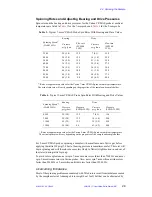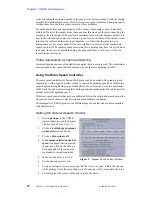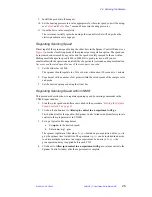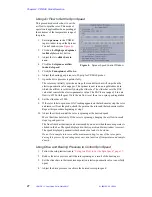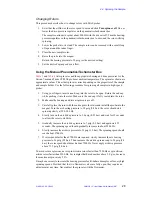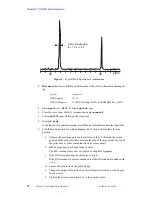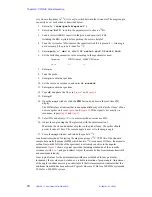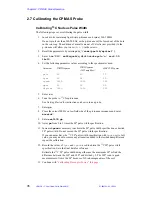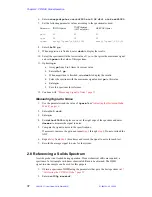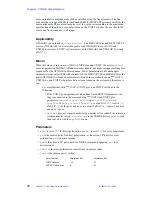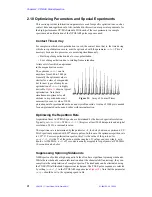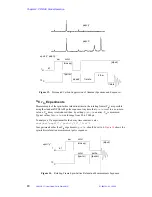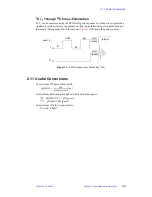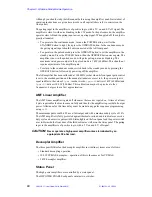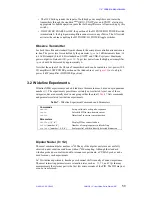
Chapter 2. CP/MAS Solids Operation
35
VNMR 6.1C User Guide: Solid-State NMR
01-999162-00 C0402
2.7 Calibrating the CP/MAS Probe
Calibrating
13
C Nucleus Pulse Width
The following steps cover calibrating the pulse width.
1.
Insert a rotor containing liquid-state p-dioxane and spin at 200-300Hz.
Do not spin faster than 200-300 Hz, or the p-dioxane will be forced out of the hole
in the rotor cap. The addition of a small amount of CrAcAc (not provided) to the
p-dioxane will allow you to use
d1=1.0
in these tests.
2.
Recall the parameters by entering
rt('/vnmr/parlib/xpolar1’)
.
3.
Enter
tn=’C13’ reffrq=sfrq d1=10
nt=4
xpol='n' at=0.05
lb=10
.
4.
Set the following parameter values according to the spectrometer used:
5.
Enter
su
.
6.
Tune the probe to
13
C for p-dioxane.
See Getting Started for instructions on how to tune a probe.
7.
Enter
ga
.
8.
Place the cursor 500 Hz on low field side of the p-dioxane resonance and enter
movetof
.
9.
Enter
sw=5000
ga
.
10. Array
pw
from 0 to 5 times the 90
o
pulse width specification.
11. Increase
tpwrm
as necessary to achieve the 90
o
pulse width specification or desired
90
o
pulse width. Do not exceed the 90
o
pulse width specification.
If you cannot achieve the
13
C 90
o
pulse width specification with
tpwrm
set to full
value, you may need to remove any attenuation added to the lowband amplifier and
repeat the calibration.
12. Record the values of
tpwr
and
tpwrm
used to obtain the
13
C 90
o
pulse width
specification. Save the final data for reference.
Estimate the
13
C 90
o
pulse width using either use the maximum 90
o
or find the
difference between the 360
o
and 180
o
and divide by 2. The 180
o
is not a good
measurement of twice the 90
o
because of r.f. inhomogeneities of the coil.
“Calibrating Decoupler Power,” this page
Parameter
INOVAcpmas
INOVAcpmas
(1 kW amplifier)
MERCURYcpmas
gain
40
40
20
tpwr
63
54
63
tpwrm
1600
1600
100
dpwr
63
55
63
dipolar
1600
1600
100




